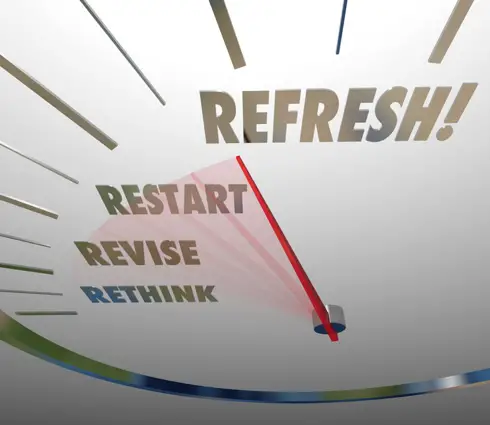Revive a Previous Career Path Using Relevancy and Relationships
 I am hearing from many people that they want to revive a previous career path but are struggling to gain traction. I sometimes think of this as returning home. There is a very famous novel You Can’t Go Home Again and sometimes that same is true for past careers.
I am hearing from many people that they want to revive a previous career path but are struggling to gain traction. I sometimes think of this as returning home. There is a very famous novel You Can’t Go Home Again and sometimes that same is true for past careers.
You have to research to determine whether a past career has changed drastically. This is particularly true with anything that has to do with technology. The pandemic has caused the digital revolution adoption to rapidly accelerate and has changed many career paths. You have to make sure you do not suffer from MSU (Make Stuff Up) disorder.
Is your past career path experience still relevant? I have written about this in the post Why Experience is Dead and Being Relevant is Far More Crucial and How to Become Relevant Again in Your Career Post COVID-19.
Once you have determined that you can revive a previous career, you will need to tap past relationships to make the transition. You will likely have to take a step back in level and pay to make this happen. This almost always requires someone to refer you to a position.
Let’s start by discussing how do you determine whether the past career path had changed.
Determine What Has Changed to Revive a Previous Career Path
The first thing to do is research job titles to see how they have changed. Probably the best resource would be job listing websites like Indeed.com. First search using keywords to determine the job titles being used today.
For example, I spent many years as a trainer and training manager. If you search for those job titles today you would not find many jobs. Now we call the training profession, learning, and development.
Once you have determined a set of job titles search LinkedIn for people who have those job titles in their current positions. Look at where these people are working. Is there a pattern on where they worked and their responsibilities?
About 5 years ago, I was working with a woman who had been a classical IT manager with a major telecommunications company. She had been laid off and was unable to find a similar role. She landed at a major tech company but in a technical sales support role. She did not like her job and wanted to restart her job search for a classical IT manager role.
We performed the exercise I described above and found that the only people who had these roles worked for state government and a large university. Every major private employer in the region had either moved to cloud computing eliminating many traditional IT jobs or offshored the work. The state government and university jobs paid much less than she was currently making.
Listen to the most recent episode


Marc Miller
Discover the Perfect Destination for Your Retirement or Remote Work Abroad #337
What she wanted would be hard to find.
Reach Out to People Who are Doing the Work You Want
If you find people with job titles that match your criteria, start connecting with them on LinkedIn. Reach out to them and ask for AIR (Advice, Insights, and Recommendations). It is these people who can give a reality check on whether the job has changed.
Start by asking some of the following questions:
- What skills are required now?
- Where are they located?
- What are the working conditions and workload?
- What is the management structure?
The more people you reach out to the better. This is also a way to network to find where the jobs are.
Are Your Skills Still Relevant?
I can tell you that much of my experience in learning and development is no longer relevant in getting a job today. Who cares that I was good at developing a traditional training curriculum that was delivered in person. Learning and development have moved online and are being developed using new tools and platforms.
If I want to revive my previous learning and development career, I would need to upskill. I would look for a certificate program that I could take virtually that would allow me to learn the new tools and have some kind of credentials.
When you have discussions with people in the previous step ask about skills needed now and how they would recommend you acquire those skills.
Relationships
Your first step should be to reach back out to former colleagues with who you might have lost contact. Where has their career taken them? If they are still working on the career path that you would like to return to ask for AIR.
You may be concerned that think less of yourself because you change career path. Maybe you failed in your last endeavor and they might think of you as a failure. More than likely they will remember you based on the last time they worked with you. As Carol Fishman Cohen, of iRelaunch, has said, your reputation is frozen in time.
Between the contacts, you made in your initial investigation and past contacts you should be able to develop a network that is capable of assisting you to revive a previous career path.
Reflection
I have often thought about returning to a past career path during my many pivots. In almost all cases I was looking at the situation wearing rose color glasses, i.e. I only was remembering the good things about the career path.
The few times I have worked with people attempting to do this, they did not like nor accept the fact that things had changed. The world had moved forward and they had not kept up. This is like a bicycle ride I did recently where I was riding with a group of friends and I slowed down to grab a water bottle from my bicycle. When I had finished, they were 40-50 yards ahead and I knew I would only be able to catch up by exerting a lot of energy.
Has the world changed and what you want to do no longer exists?
Have you kept up your skills? How much energy are you willing to exert to catch up?
This can be done but embark on this journey with knowledge and insights!
Marc MillerLike What Your Read? Get Career Pivot Insights
Do You Need Help With ...

Check out our Help Center where you have access to 14 different content portals.

